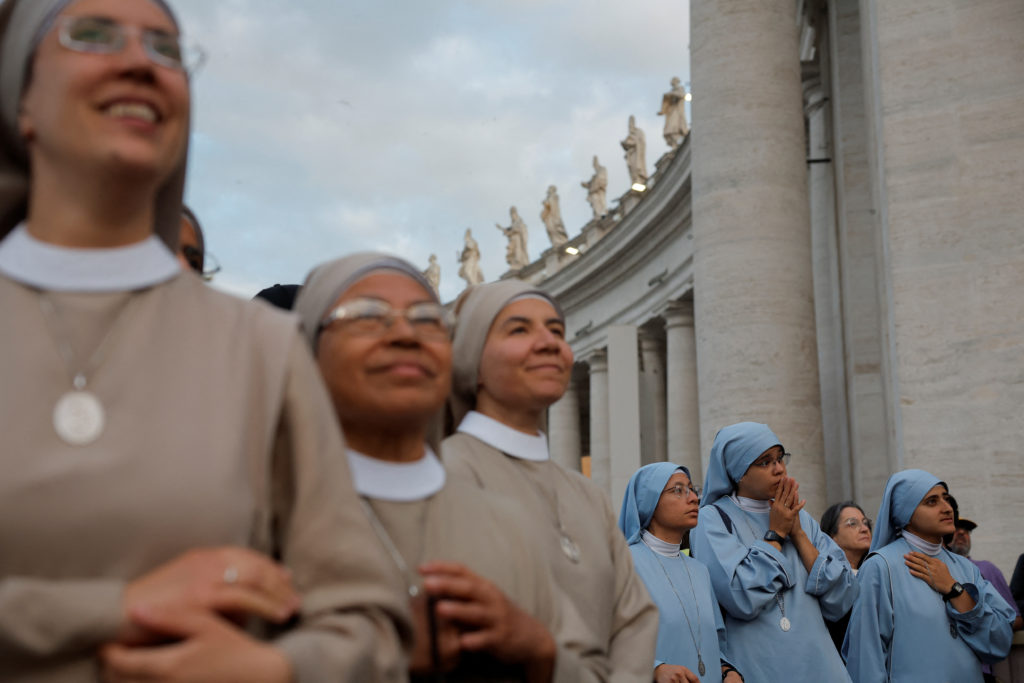## Hold onto your hats, gamers! The Vatican just dropped a real-life quest, and the stakes are higher than finding the last Golden Shroom. Forget fireballs and dragons, the only smoke we’re watching today is billowing from the Sistine Chapel. Day 2 of the papal conclave is underway, and the world is glued to the screen, waiting for those tell-tale puffs that signal a new Pope has been crowned. This isn’t just a religious event, folks – it’s a global game of strategy, intrigue, and sheer luck. Will the College of Cardinals choose a bold leader, a peacemaker, or a maverick who’ll shake up the Vatican’s status quo? Tune in with us as we break down the drama unfolding in real-time, and speculate on what this new Pope’s reign might mean for the 1.3 billion souls under his watch.
The Cardinals’ Chamber

The papal conclave, a centuries-old tradition, is a meticulously orchestrated event steeped in symbolism and secrecy. At its heart lies the Cardinals’ Chamber, a dedicated space within the Vatican walls where the 133 cardinal electors converge to deliberate and cast their votes for the next pope.

Logistical Considerations
The cardinals’ living arrangements within the Vatican are uniquely designed to foster a sense of isolation and focus. They are housed in the Domus Santa Marta, a residence adjacent to St. Peter’s Basilica, where they are cut off from external communication and distractions. This seclusion allows them to engage in deep prayer, reflection, and discussion, free from the pressures of the outside world.

Voting Procedures
The voting process itself is shrouded in ritual and confidentiality. Cardinals gather in the Sistine Chapel, a masterpiece of Renaissance art, beneath Michelangelo’s awe-inspiring frescoes depicting the Creation and the Last Judgment. The ballots, containing the name of their chosen candidate, are cast in secret, with each cardinal marking their choice and then folding the paper meticulously. To maintain anonymity, the ballots are burned in a specially designed stove, with the color of the smoke signaling the outcome.

The Symbolic Significance of the Sistine Chapel
The Sistine Chapel holds profound symbolic weight within the conclave. Its frescoed walls, depicting scenes from the Bible, serve as a constant reminder of the cardinals’ sacred duty to choose a shepherd for the world’s 1.4 billion Catholics. The chapel’s name itself evokes the legacy of Pope Sixtus IV, who commissioned Michelangelo’s iconic work and established the tradition of holding papal elections within its walls.

The Smoke Signals
The iconic smoke signals emanating from the Sistine Chapel chimney are a captivating spectacle that simultaneously signals the progress and outcome of the papal conclave. This ancient tradition serves as a visual manifestation of the cardinals’ deliberations, providing a tangible link between the secluded world of the conclave and the global audience eagerly awaiting news.
Decoding the Smoke
Two distinct colors of smoke hold profound meaning: white signifies the election of a new pope, while black indicates that no candidate has secured the necessary two-thirds majority. The color of the smoke is determined by the chemical composition of the incense used in the burning process. White smoke is achieved by adding quicklime to the incense, while black smoke results from the combustion of plain incense.
The Chimney and the Stove
The chimney, a towering structure designed to carry the smoke skyward, plays a crucial role in disseminating the news. Its height ensures visibility from across the Vatican City, allowing the smoke signals to be seen by the gathered crowd and the world watching through live broadcasts. The stove, located within the Sistine Chapel, is meticulously designed to ensure the complete combustion of the ballots and produce a consistent and noticeable plume of smoke.
The Power of Silence
The papal conclave is a time of profound silence, a deliberate choice to foster contemplation and introspection. This enforced isolation serves several crucial purposes, ensuring that the cardinals can engage in deep prayer, engage in meaningful discussions, and ultimately make a well-informed decision guided by the Holy Spirit.
Secrecy and Confidentiality
Maintaining secrecy throughout the conclave is paramount to its integrity. The cardinals are forbidden from communicating with the outside world, preventing outside influences from swaying their decisions. This isolation extends to their personal belongings, as they are required to hand over their phones and other electronic devices to prevent any form of external contact. The Vatican employs sophisticated security measures, including signal jammers, to ensure that the cardinals remain completely cut off from the world.
The Importance of Reflection
The silence imposed during the conclave is not merely a matter of security; it is a deliberate attempt to foster a state of spiritual reflection and introspection. By removing distractions and external pressures, the cardinals are given the space to contemplate the weighty responsibility they bear and to seek guidance from within. This period of quiet contemplation is essential for ensuring that the final decision is based on prayerful discernment and a deep understanding of the Church’s needs.
Conclusion
As the smoke signals from the Sistine Chapel continue to be scrutinized, the world waits with bated breath. The papal conclave, a centuries-old tradition shrouded in secrecy, has gripped our attention as cardinals gather to elect a new shepherd for the Catholic Church. The article explored the historical context of the conclave, highlighting its significance in shaping the direction of the world’s largest Christian denomination. It also delved into the challenges facing the Church today, from declining membership to navigating complex social issues, underscoring the importance of the cardinals’ choice in navigating these turbulent times.
The selection of the next Pope will undoubtedly have ripple effects across the globe. From influencing diplomatic relations to shaping the discourse on vital social issues, the new leader’s vision will be watched closely by billions. Will the Church continue its traditional stance on issues like abortion and same-sex marriage, or will a new Pope usher in a more progressive era? Only time will tell. But one thing is certain: the world is holding its breath, eager to see what the future holds under the guidance of the man chosen by the smoke.
As the cardinals deliberate, let us remember that this is not merely a political or religious event. It is a moment of profound human reflection, a search for spiritual guidance in an increasingly complex world. The choice they make will resonate far beyond the walls of the Sistine Chapel, reminding us that even in the 21st century, the age-old quest for meaning and purpose endures.